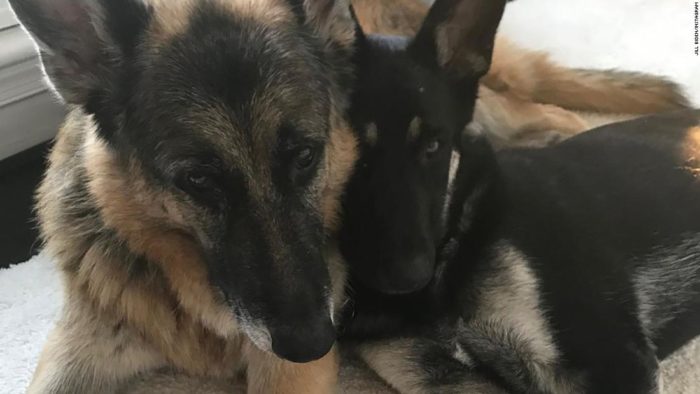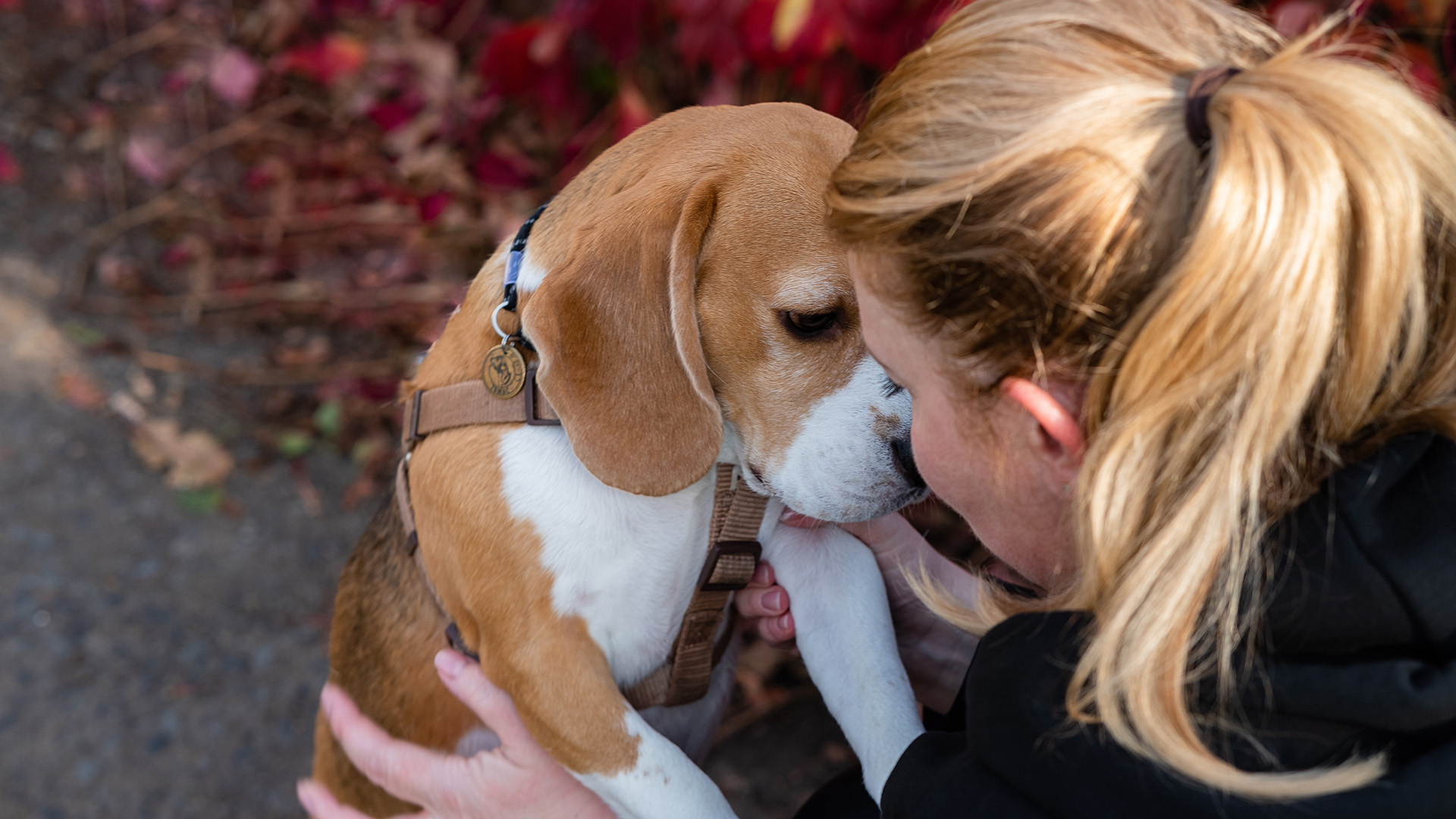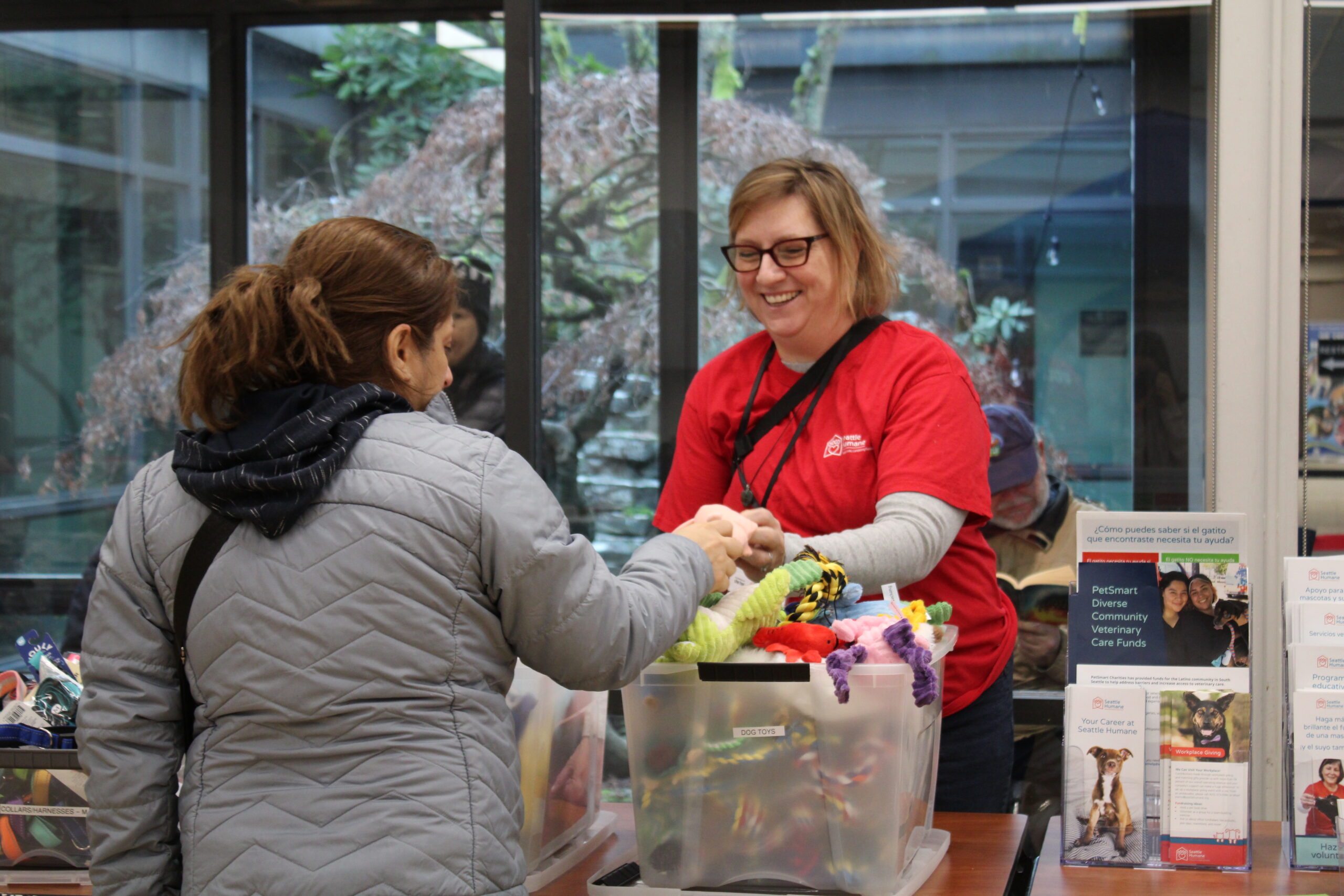
Animal shelters across the nation celebrated when it was announced that the White House would soon be occupied by a shelter dog – a first in this nation’s history. Major, President Biden’s adopted German Shepherd, recently made headlines when he was “surprised by an unfamiliar person and reacted in a way that resulted in a minor injury to the individual.” While this story is still developing, Seattle Humane would like to share what we know about aggressive behavior in dogs, harmful myths and how positive training methods can help your four-legged family members.
Social media is buzzing with speculation about what caused the bite. Was it the fault of the dog or the security guard? Is the White House just too hectic for dogs? Did the dog sense that there was something untrustworthy with the person? Is it because Major was a rescue dog?
Aggressive behavior is not a dog’s fault – it’s just behavior. In other words, all behavior – including aggression – is a reaction to something, but that doesn’t mean it’s the injured person’s fault. Bites can and do happen when the injured person is perfectly well-intentioned. A perfect example is someone who reaches toward a fearful dog to let them sniff as a way to make friends. Since dogs can’t read our intent, all they see is a hand reaching for them.
There are a variety of factors that lead to aggressive behaviors in dogs, including:
- Genetics. It’s not just how you raise them. A dog’s (or human’s) behavior is shaped through both nature and nurture – genetics and experience. If a dog’s parents were anxious, they are likely to pass those traits to their puppies.
- Health. If a dog is in pain or uncomfortable, they are likely to be less tolerant of interactions with people or other dogs.
- Socialization. Puppies need positive experiences around many novel sights, sounds, smells and social interactions before they are 16 weeks old. After that, new things may trigger anxious, reactive and aggressive behaviors.
- Environment. There may be sights, sounds and/or activities in the environment that cause increased anxiety or the space does not allow them to avoid stressful interactions.
- Learning History. If a dog tried to avoid certain interactions in the past, but people failed to recognize the subtle signs of stress, they learn that avoidance is not effective and can escalate to more obvious displays or behaviors, like biting.
Likewise, dogs that have been punished for barking, growling, or other behaviors designed to prevent or end a stressful interaction, learn to suppress those warnings, making them a higher risk of biting “out of the blue.” - Trauma. If a dog has had a traumatic experience in the past, situations or interactions that resemble that past experience can cause a defensive reaction. This can include physical abuse, but the trauma could be unintended or unavoidable, such as invasive veterinary treatments.
These factors affect all dogs, of any breed, regardless of whether they were adopted from a shelter/rescue or purchased from a breeder. Dog behavior professionals who work with behavior cases can attest to this fact.
In the case of Major and the security member, we don’t have any of those pieces. We also don’t know the circumstances surrounding the bite or the level of injury. No two bites are the same, which is why dog behavior experts gather detailed histories about each dog before determining the cause of the bite.
Finally, as for the belief that dogs sense when someone is bad: this implies that there is a higher percentage of bad people working for the postal service, in veterinary clinics and animal shelters, and that children under 6 years old are inherently bad people. And given the number of dogs that didn’t bite burglars or their own abusers, it’s clear that bites are not caused by a canine sixth sense.
If we want to prevent dog bites, we need to recognize the signs of stress in our dogs and learn how to reduce that stress. Fortunately, Seattle Humane offers Behavior 101, a low-cost online class that teaches pet lovers how to see and respect their dogs as individuals.
If your dog has shown signs of fear or aggression toward others, it’s extremely important to work with a certified behavior professional. While it can be tempting to try advice given by fellow pet parents and television stars, every dog is unique, and what helped one dog may not help yours…or could make things worse. Contact our Behavior Department at behavior@seattlehumane.org and our behavior experts can provide helpful resources and referrals to local professionals.
Lisa Mullinax is the Behavior Program Manager at Seattle Humane and a Certified Dog Behavior Consultant through the International Association of Dog Behavior Consultants. She has worked with dogs and their families for 20 years, with a focus on reactivity and aggression.









